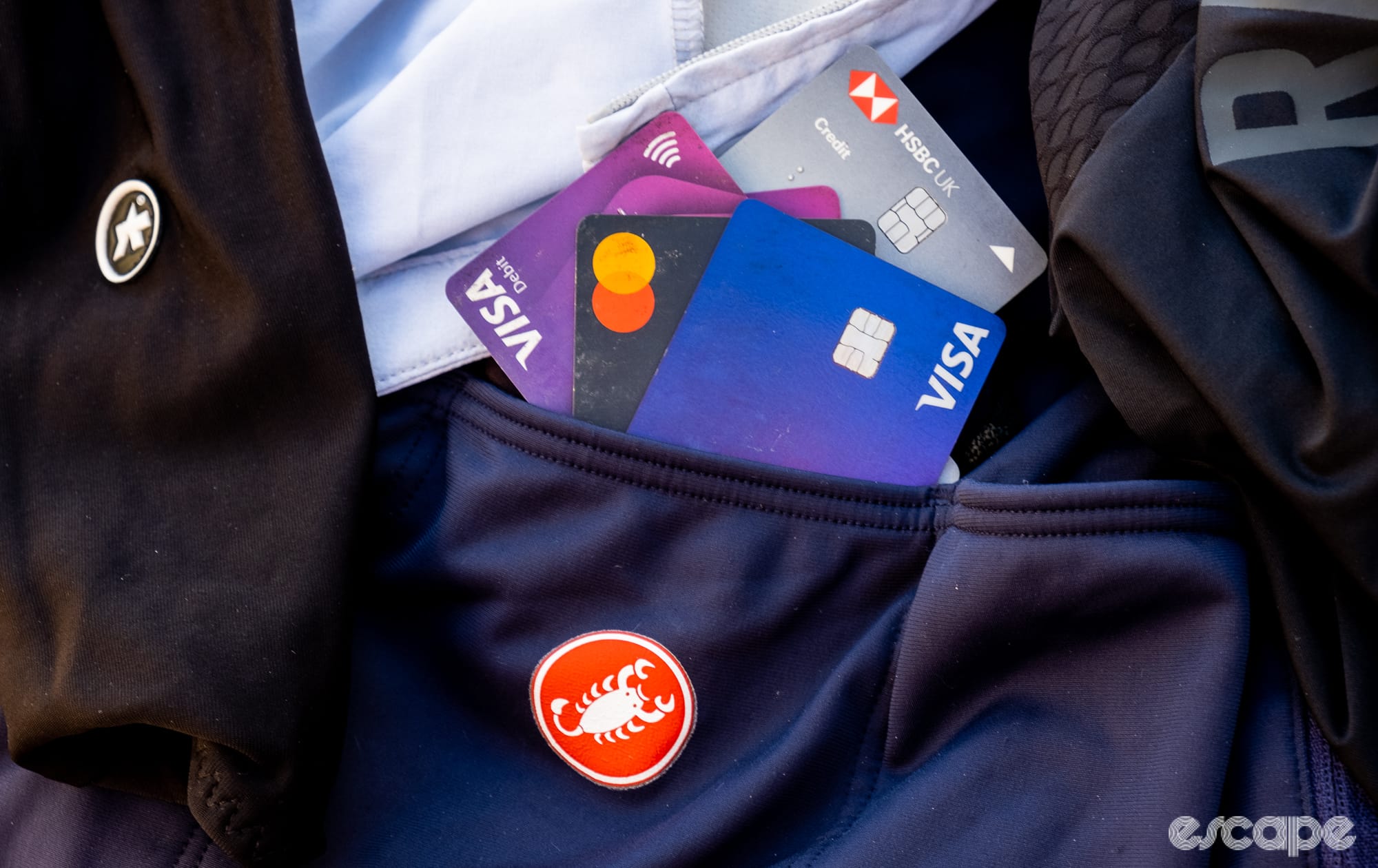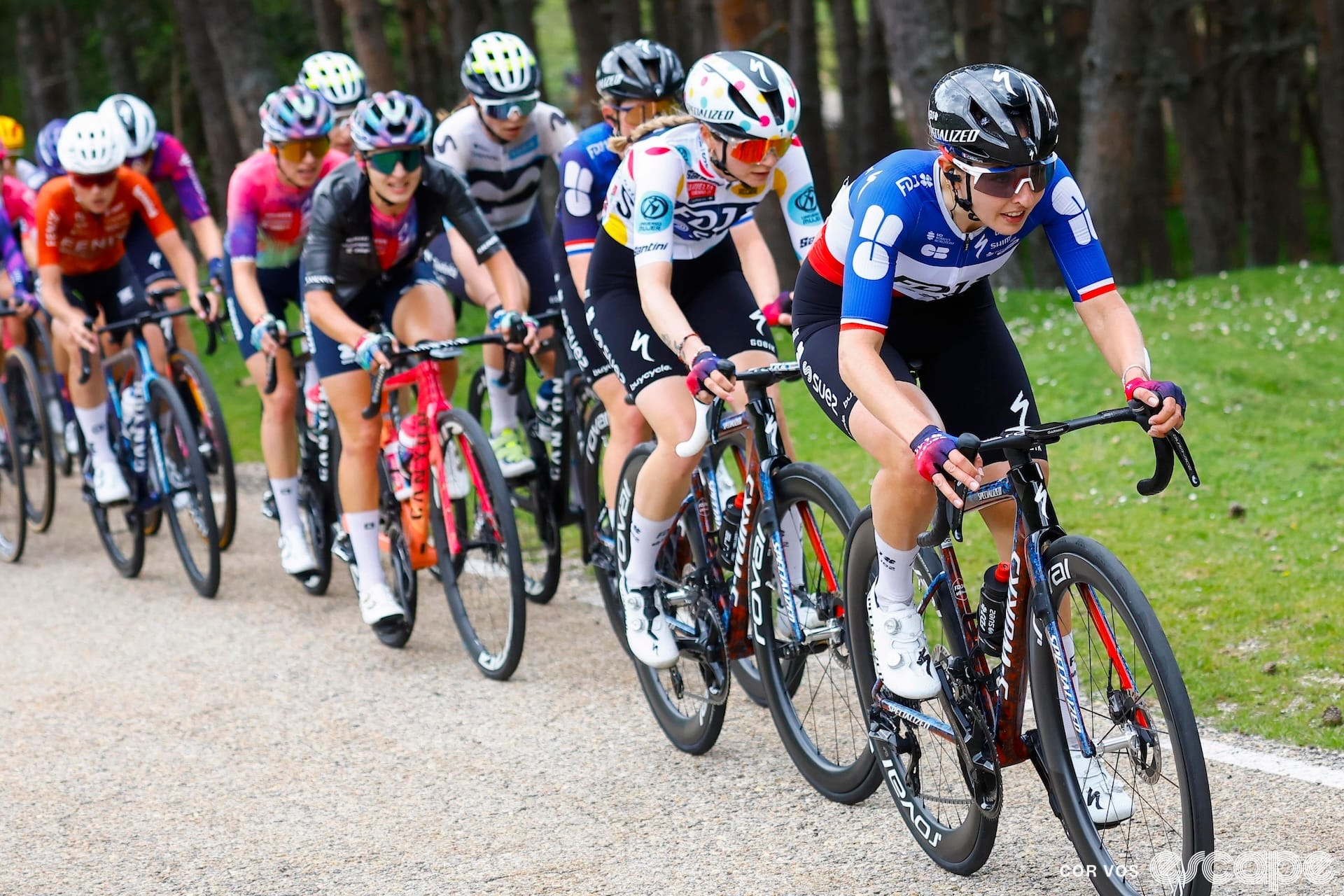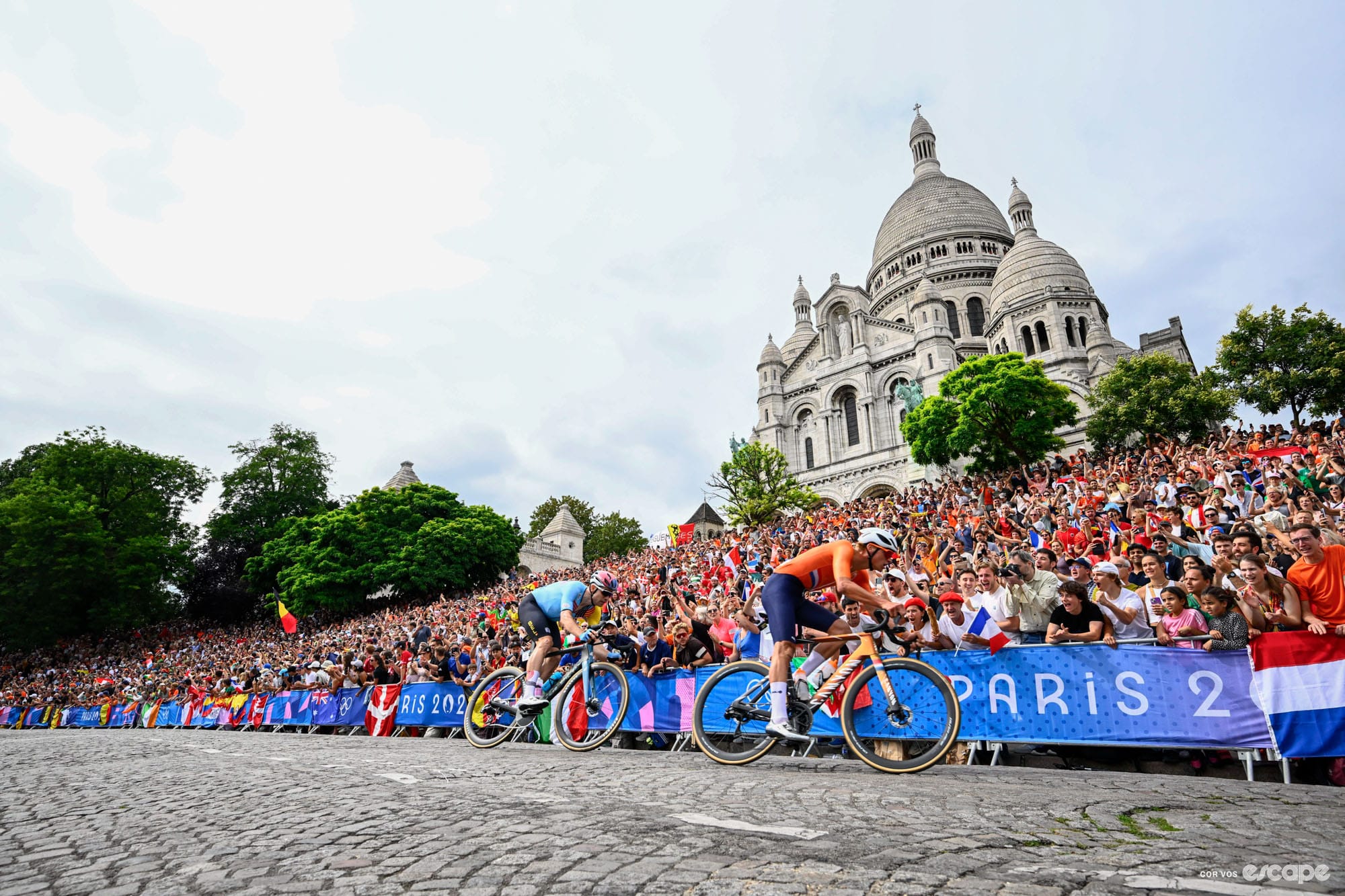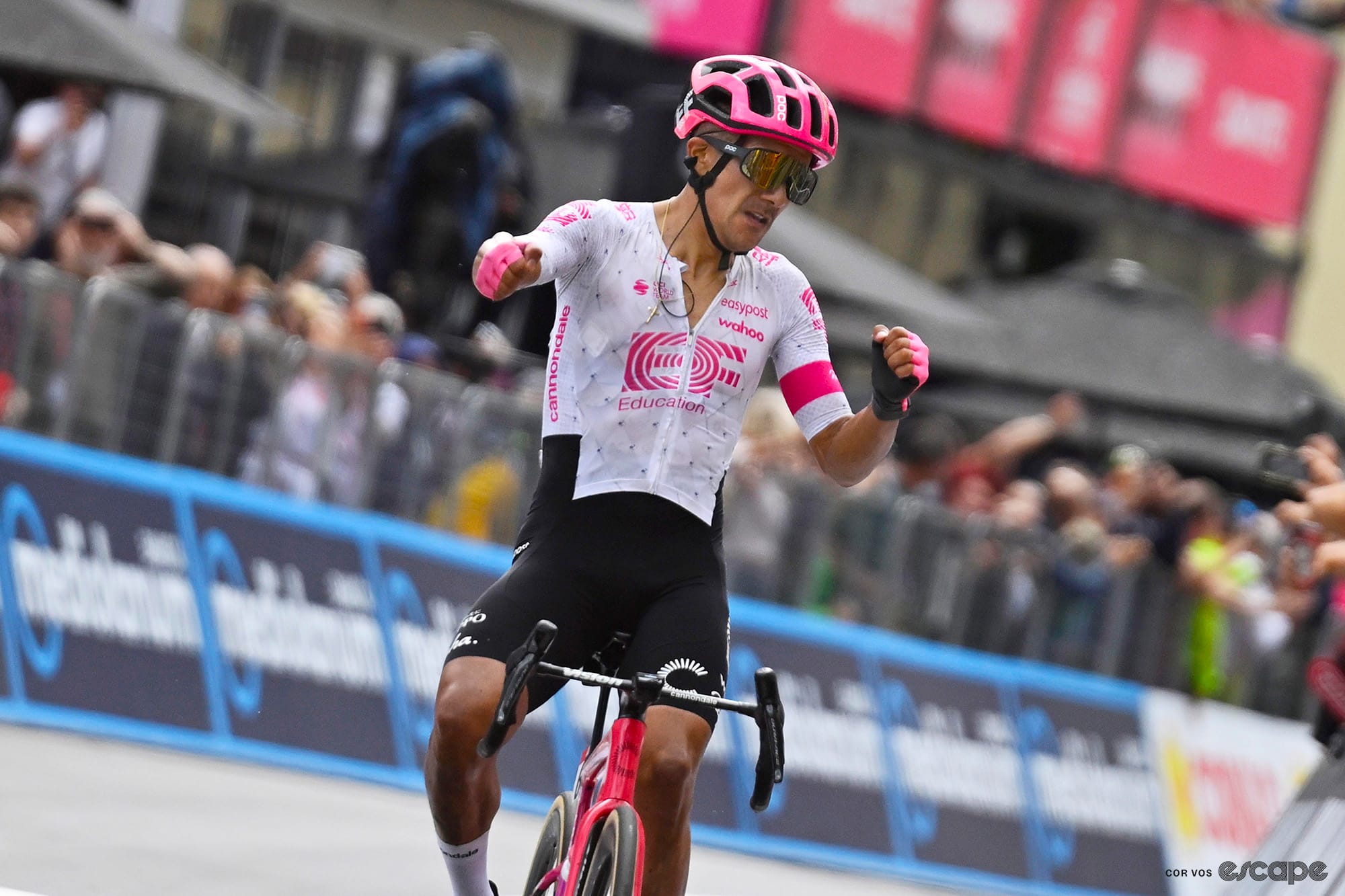Good day, and thank you for opening up this edition of the Wheel Talk Newsletter. Despite talking through the finer points with Gracie, Loren and even Matt de Neef on the podcast, I still can't quite wrap my head around the Amstel Gold Race. For those still semi-disappointed about Sunday's race, the turnaround is quick. The next WorldTour race is on Wednesday (tomorrow as this comes out): La Flèche Wallonne. The race has an iconic finish perfect for a very specific type of rider.
Before I explain, consider signing up to get this, and Escape Collective's other great newsletters sent straight to your inbox.
There was no rest for the riders in preparation for the Ardennes; the peloton first lined up for Brabantse Pijl last Wednesday. It's a race with some cobbles but there are also enough short punchy climbs that the Ardennes teams usually take it quite seriously. With both features, it makes for a transition out of the cobbled Classics and into the hilly ones.
Lidl-Trek had their best climbing team start the race, with their focus solidly on Elisa Longo Borghini and Shirin van Anrooij. Longo Borghini's chief competition was Demi Vollering of SD Worx-Protime, another climber type who took a break after the Tour of Flanders in preparation for the Ardennes.
A breakaway of five kicked off the action early on, but they were caught by Vollering and Longo Borghini when the two attacked the peloton on the Holstheide climb with 30 km to go. The front of the race with the addition of the Dutch and Italian national champions didn't remain together for long. The two broke away from the rest, with Alessia Vigilia (FDJ-Suez) with 21 km to go, and the race was down to three.
Vollering and Longo Borghini worked well together, with AG Insurance-Soudal and EF Education-Cannondale working together half a minute or so behind. Vigilia, out-gunned by the other two, sat on the two champions.
Tour Down Under winner Sarah Gigante put in a solid effort to try to bridge to the three ahead, but the peloton was happy to let her dangle in the gap before reeling her back in. Meanwhile, Vigilia was finally distanced from Longo Borghini and Vollering with 11 km to go on the Moskesstraat climb. Into the final kilometres, the new rival duo of Longo Borghini and Vollering didn't work together long, even with the group only 20 seconds behind. The Italian champion attacked with just over 7 km to go, leaving Vollering behind.
Longo Borghini's attack proved that Vollering had only been weighing her down. The gap grew to 40 seconds by the flamme rouge, so by the finish line the Italian had plenty of time to let the victory sink in.
Vollering held on to finish second and Alexandra Manly won the reduced bunch sprint to take an impressive third.
"We started in Flanders, and today we wanted to have a more open race," Longo Borghini said after the race. She dedicated her third victory of the year to her husband Jacopo Mosca, who rides for the Lidl-Trek men's team because she planned her attack to be on the Moskesstraat (get it ... Mosca ... Moskesstraat).
When asked about her rivalry with Vollering, Longo Borghini said she respects the Dutchwoman but she was stronger on the day. "Today I was stronger, but tomorrow she will be stronger; it's like this in cycling. One day you are faster or stronger and another day they beat you. Maybe tomorrow she [will] beat me."
According to the race winner, she didn't mark a specific climb to attack in the Amstel Gold Race because "none of those climbs have the surname of [her husband]".
Racing continues...
At La Fléche Wallonne!
The penultimate one-day event of the spring, La Flèche Wallonne is one of the longer-running races on the women's calendar. The race first started in 1998 and was one of the first to join the WorldTour when the UCI pivoted from the World Cup model to the WorldTour model. The finale is so specific that a glance through the results sheet shows a lot of repeat names. The winner of the inaugural edition, Fabiana Luperini, won again in 2001 and 2002, and Nicole Cooke won in 2003, 2005, and 2006. Marianne Vos has the second-highest number of wins with five in 2007, 2008, 2009, 2011, and 2013 but the queen of the race is without question Anna van der Breggen. The former multi-time World Champion turned director sportif for SD Worx-Protime won seven years in a row from 2015 to the year she retired, 2021.
In 2022 Marta Cavalli won atop the Mur de Huy just days after an incredible victory at the Amstel Gold Race, and last year Demi Vollering won all three Ardennes races. Basically, the whole block is tailored to a very specific type of rider, but this race most distinctly. Contrary to where the finish is, it's not a "pure climber" finish, it's more for a climber with a kick a la Van der Breggen and Vollering. However, that might change this year with a slightly altered run into the base of the climb ...
The Basics
When: Wednesday 17th April
Distance: 146 km
Live coverage: 🇬🇧🇪🇺 Discovery +/Eurosport @ 16:55 CET, 🇺🇸 Peacock @ 7:00 EDT, 🇨🇦 FloBikes @ 7:00 EDT, 🇦🇺 SBS on Demand @ 00:55 AEST
The Course
The women roll out of Huy for an adventure on two different loops, one long and one less long. The whole day is up and down, up and down with 2,100 m of elevation gained over the 146 km.
The first climb – Côte des Gives – hits after only 7 km, and from there, it's pretty much on. After they complete the long loop, with 51.3 km remaining, they will enter the smaller circuits containing both the Côte d’Ereffe (2.1 km averaging 5%) and the famed Mur de Huy (1.3 km averaging 9.6%).

The entire race takes place on small roads, making positioning critical not only at the base of the climbs but also in between ascents.
The final circuit around Huy is where the race really happens – on both climbs but especially the Mur de Huy. The Mur may average 9.6%, but it has one chunk of 18% and a good long bit of 12%. Any normal person would complete the ascent on foot, and even then they'd be sweating.
In years past a third climb was part of the circuit, the Côte de Cherave.
The Côte de Cherave used to sit smack in the middle of Côte d’Ereffe and the Mur de Huy, making the finale even more difficult. Without it, we will see a larger group at the base of the Mur. Van der Breggen was honest in the leadup to the race that she does not like the change in course.
"The Wall of Huy is such a special climb,” Van der Breggen said in a press release from SD Worx-Protime. “Depending on the type of rider you are, you approach [the climb] with a different approach. If you are not one of the ultimate punchers, you can try to bluff, but you run the risk of standing still on the steepest part. If you know that you are not among the absolute top climbers, you have to try to get away from the Wall to have a chance of victory.”
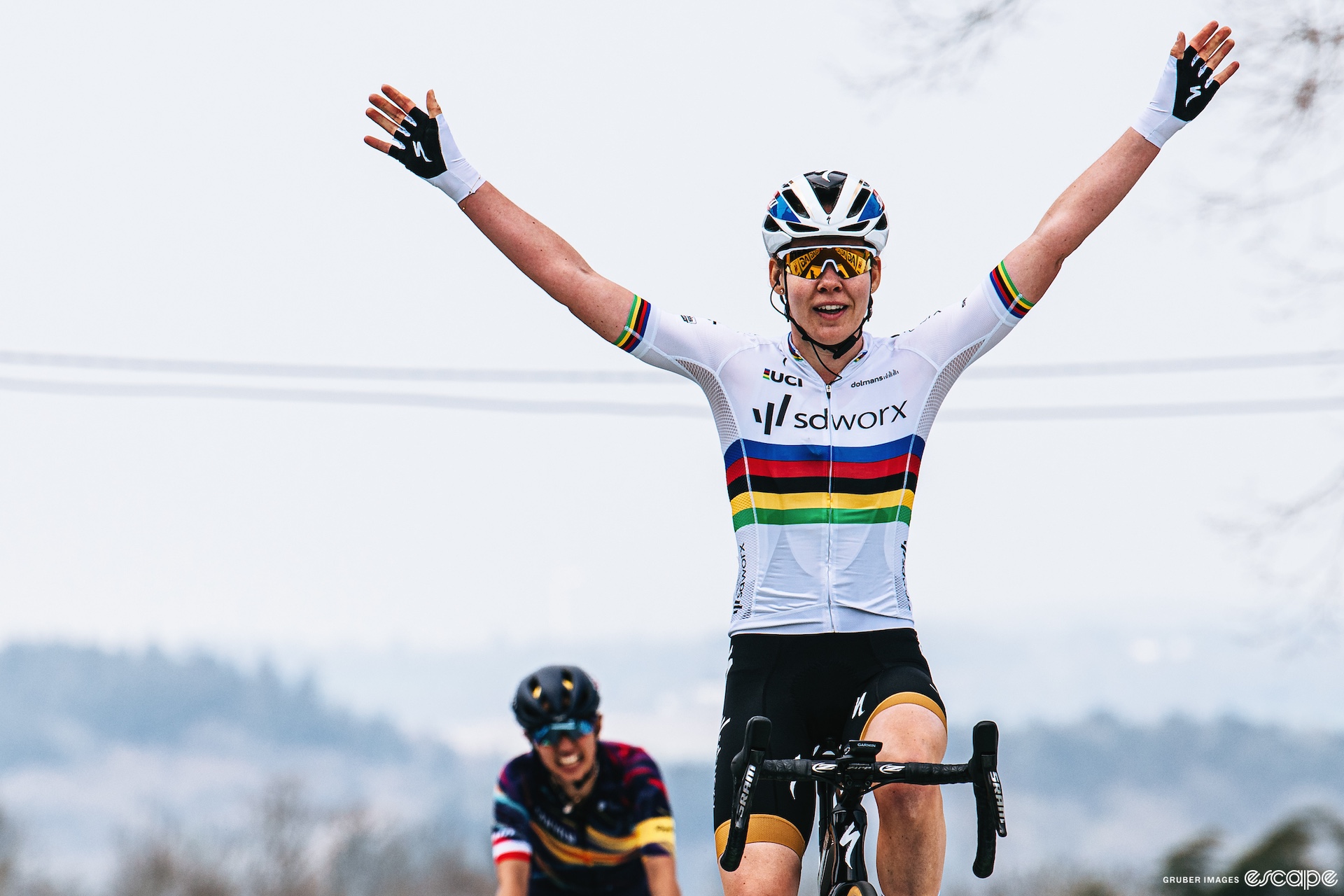
“That has become a lot more difficult this year because the Côte de Cherave has been removed from the course. I really regret that, because that slope made the finale doubly interesting. If you didn't want to wait until the Wall, there were options there to make a difference. Now you have a descent over a wide road towards the foot of the [Mur de] Huy."
"There is an even greater chance that the pure climbers will emerge and that an elite group on the Wall will decide who wins or loses.”
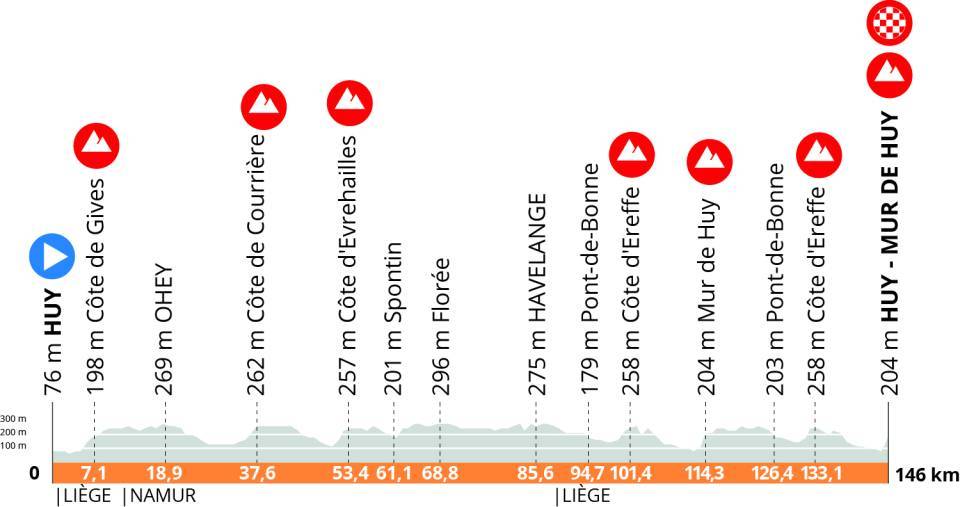
Attacks normally fly on the Côte d’Ereffe, both the first and second ascent, but any move made in the past will likely come back by the second run-in to the Mur de Huy. This race is unique because it hasn't, in recent memory, ended with a breakaway. There is almost always a breakaway, sometimes they make it to the base of the Mur, but the winner always makes their move on the steepest section of that final climb. Some – Loren Rowney – call it the best 1.5 km of bike racing on the calendar.
The Players
Interestingly, La Flèche Wallonne is a lot more open this year than it has been in years past. Going into the 2022 edition Cavalli was among the favourites; her main competition was Van der Breggen's successor Demi Vollering. Vollering then went on to win the race the year later, but ahead of this year's edition, she isn't looking to be on the same form. As mentioned on the Wheel Talk podcast this week, it looks like she's missing a bit of her kick at the moment. That doesn't mean she's not a contender for Wednesday's race; she is. But because she fell short at Brabantse Pijl in particular, the race is a bit more up for grabs.
An outside favourite is Vollering's teammate Niamh Fisher-Black. The Kiwi was on fire at Trofeo Alfredo Binda a few months ago after winning the queen stage of Setmana Valenciana. It's unlikely the Dutch team will allow Fisher-Black off the leash, but we can dream.
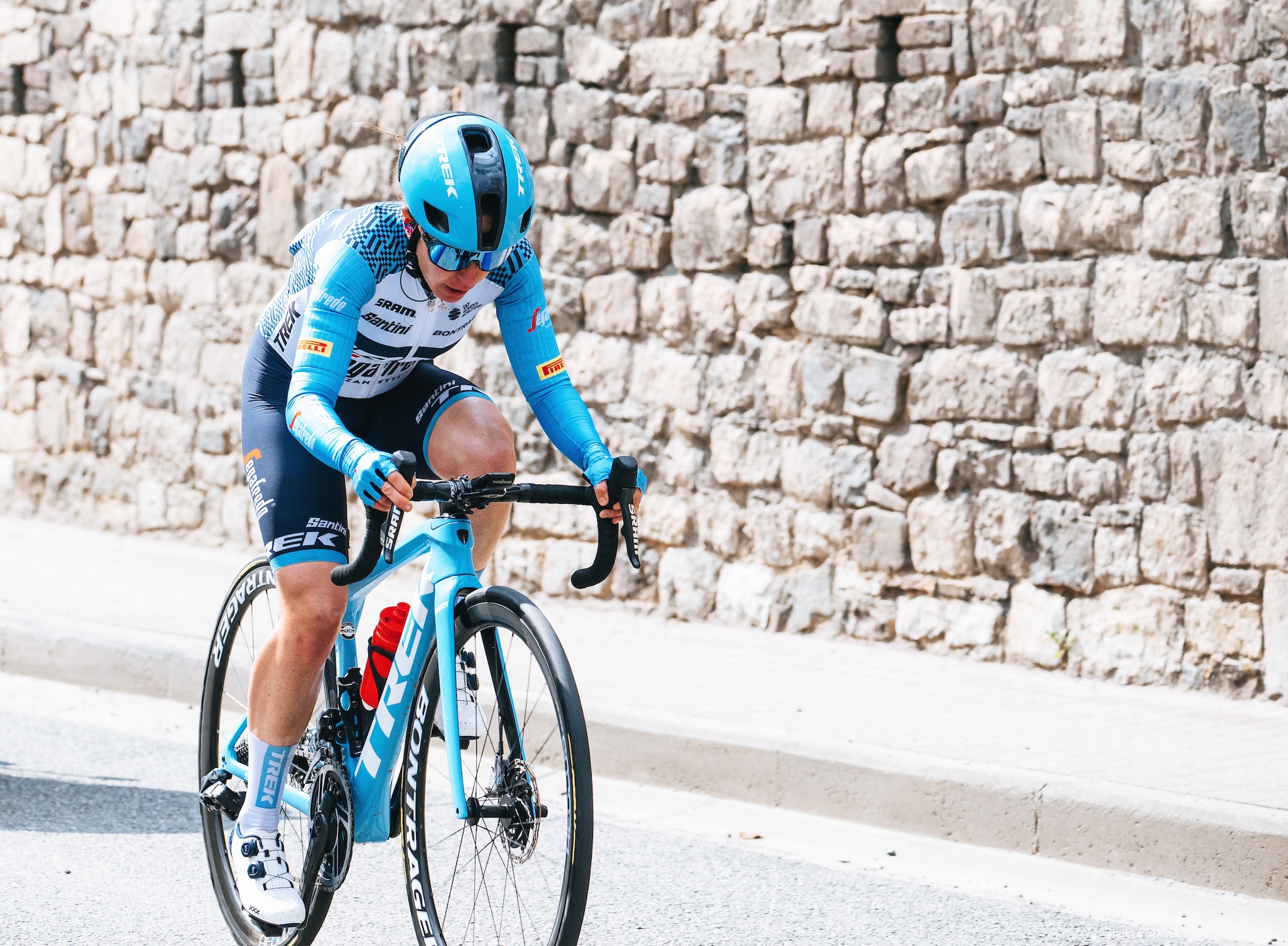
The other strong team of the spring, Lidl-Trek, comes in with a few options in Elisa Longo Borghini, Gaia Realini, and Amanda Spratt. Their "A-rider" is probably Longo Borghini, who is currently riding a wave of good form after winning the Tour of Flanders and Brabantse Pijl. Her attacks at both put her solidly above Vollering at the moment. Realini, on the other hand, finished third at Flèche Wallonne last year and is one of the top climbers in the world. Spratt, like Fisher-Black, will likely be working for her team but her attack at the Amstel Gold Race was fantastic and I think I speak for everyone when I say #FreeSpratty.
Two other very strong climbers who re-joined racing recently – Ashleigh Moolman Pasio and Sarah Gigante of AG Insurance-Soudal – come into the race as favourites to make the podium at least. Gigante won the Tour Down Under by attacking on the final climb back in January, and Moolman Pasio is one of those strong climbers with a good kick.

Canyon-SRAM's Kasia Niewiadoma is another rider in form. She recently achieved one of her top results in some time at the Tour of Flanders with second behind Longo Borghini, and she was on the attack at Amstel Gold Race on Sunday. Had the race gone on without a hitch, I have no doubt Niewiadoma would have been on the podium. In 2017 Niewiadoma was third behind Van der Breggen and Lizzie Deignan, and in 2021 she was second. It's safe to say she is in very good form and a podium is well within reach.
Cavalli will return to racing following a stint at altitude as she continues to recover from a crash at pre-season team camp. While not really a contender, it would still be nice to see the Italian up there.
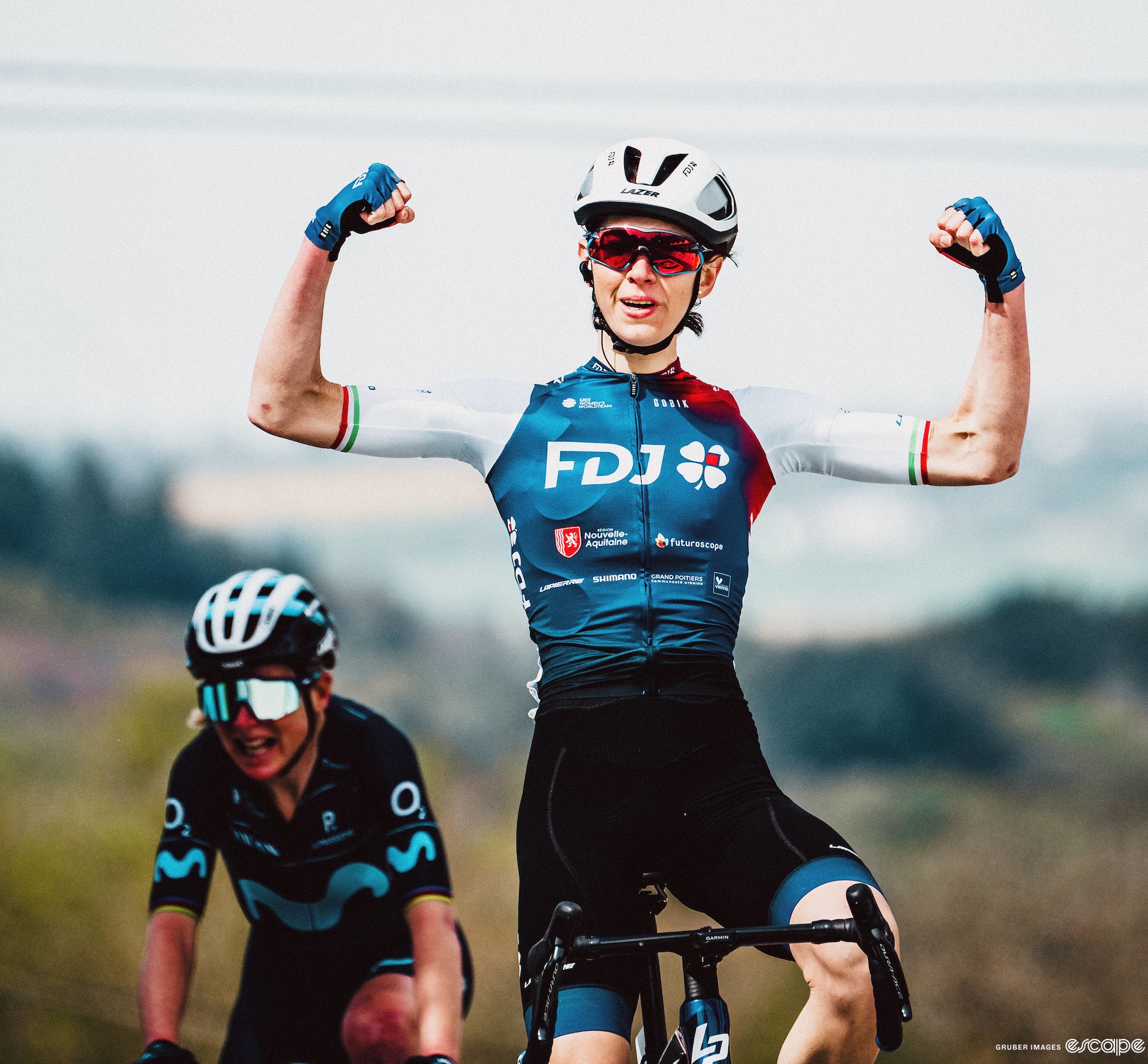
Other "climber" types to keep an eye on: Mavi Garcia (Liv AlUla Jayco), Evita Muzic (FDJ-Suez), Pauliena Rooijakkers (Fenix-Deceuninck), Juliette Labous (DSM Firmenich-PostNL), Kim Cadzow and Clara Koppenberg (EF Education-Cannondale), and (according to someone on the podcast) Fem van Empel (Visma-Lease a Bike).
A full race preview for Sunday's Liege-Bastogne-Liege will be available later this week, please check EscapeCollective.com for more information on the final Spring one-day of the year.
Wheel Talk Podcast
An episode as chaotic as the race it's about. This week Matt jumped on Zoom with Loren, Gracie, and I to try to parse what exactly happened at the Amstel Gold Race and look ahead to La Flèche Wallonne. Spoiler alert: we still don't understand.
From a game of chicken to a dangerous breakaway, to an exciting (in my opinion) update to the Draft. We had too much to cover in one episode.
Let's Discuss
Sharing the spotlight, and race days, with the men.
Before I begin, let me make myself clear, I understand how difficult it would be to shift all the women's one-day races so they are separate from the men's. I understand the added cost, I understand there are amateur sportives and other events that happen around the big Classics, I get all of it. Let's just take that out of the equation for a minute because I want to make a case for the women having their day.
The Amstel Gold Race might not be one of the leading events of the spring – it's not the Tour of Flanders – but it is a big deal for the peloton and for the Netherlands. It's a big deal for riders like Elisa Longo Borghini, who sat out Paris-Roubaix Femmes avec Zwift to target the Ardennes. It's a big deal for Demi Vollering, Ashleigh Moolman Pasio, Amanda Spratt, and Kasia Niewiadoma, riders who just spent weeks at altitude to prepare for these three races (and the season to come). It's the first of a three-race block that opens up opportunities for more riders to get results than Lorena Wiebes (almost) and Lotte Kopecky.
On Sunday all of these women lost out when the race was massively shortened. And it wasn't the organization's fault; they did what they could at the moment. Of course, the accident that happened on the course, with a police officer colliding with a car on the Bergseweg, takes precedence over the race itself; after over an hour of delay to deal with the crash they had little choice but to shorten the women's event.
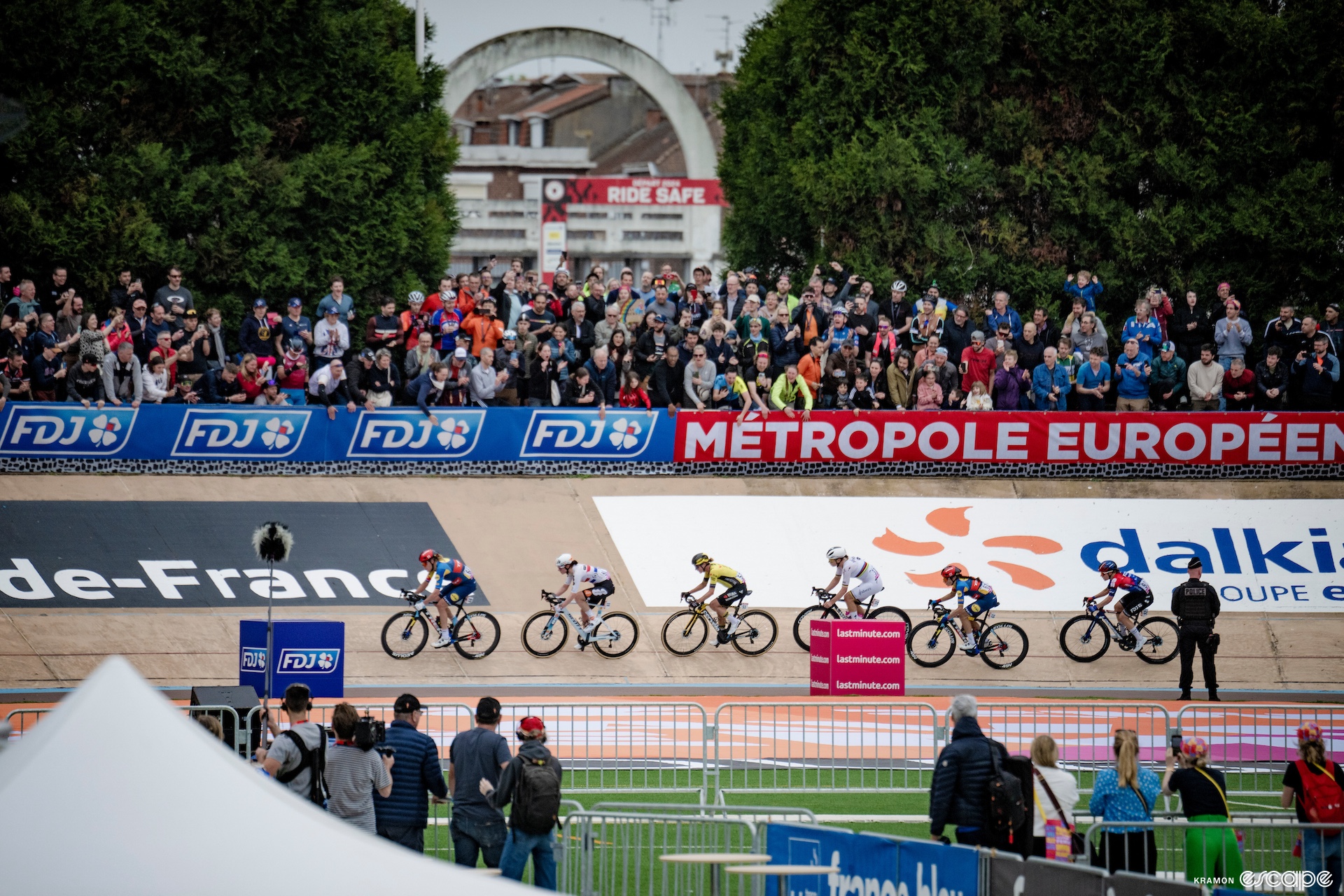
It was still hard to swallow that the women's race was cut down by more than 50 km so that the men's race could continue as planned. And I'm not saying the men's race should have been shortened; I don't want either race impacted so drastically, but because the women needed to finish before the men entered the finishing circuits, their race was the one that got sliced.
We were spoiled by Paris-Roubaix Femmes only a week ago. At first, when it was announced the women would race on Saturday and the men on Sunday, some people, myself included, were sceptical. What would it mean for the roadside fans? What would it mean for interest in the race?
Now, four years in, the impact of the women having an entire day to themselves has been massive. Just look at the number of stories that came out of that one day when media outlets don't have to divide up their staff between the men's and women's races, like at Flanders. Stories about the women's race don't get immediately overshadowed by the men's event, they aren't forced down a homepage as story after story piles in about the men.
Because like it or not, there are more fans of men's racing. For now, if they are on the same day, the women will always take a backseat, and we saw that on Sunday. The men's race was diverted; the women's lost a third of the distance.
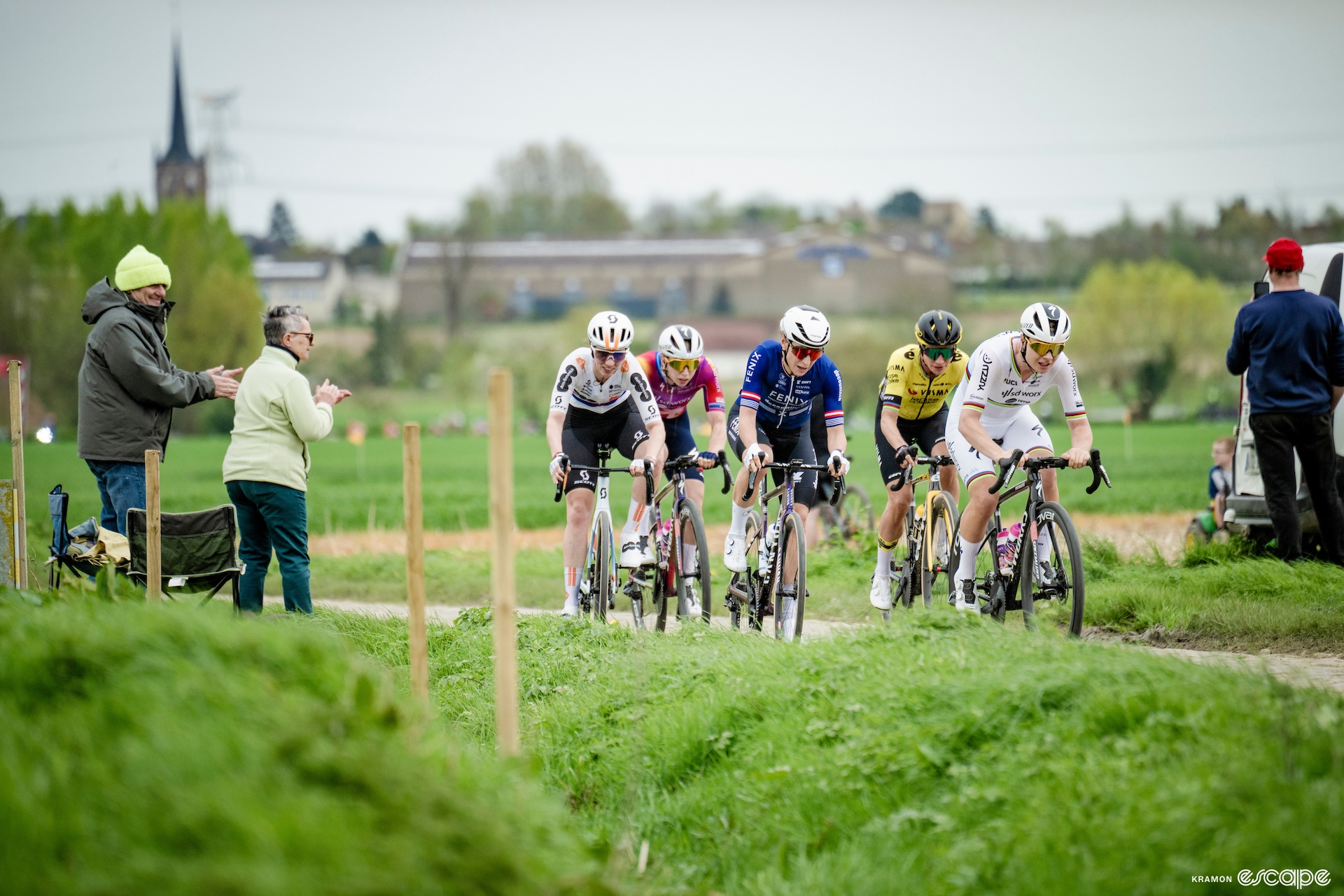
Flanders Classics has tried to adjust its schedule so the women finish after the men, but that also isn't necessarily the right answer. On Wednesday La Flèche Wallonne will kick off its live coverage at 16:55 CET, so everyone in Europe will be dealing with school pickup, after-work chores, etc. I know I won't be able to watch a race that finishes after 18:00. In the USA, the race will be finishing as people head off to work, so they will also miss that market, and in Australia, only Matt de Neef will be up to watch the finish around 2 AM and honestly, he should be sleeping; the guy works hard.
By slotting the women's race in after the men's, from a journalist's perspective, all the attention is on the men's race when the women's finishes anyway. It doesn't help put them in the spotlight.
The women's sport is growing, I say it over and over and over. Last year the Tour de France Femmes avec Zwift proved it could stand on its own, without the men's race.
It would be a huge ask of the race organizers, but perhaps it's time to consider some of the women's Classics taking place separately from the men's event. To avoid what happened on Sunday, and what happens every time the two have to fight for coverage, perhaps this is another step in growing women's cycling on its own, out from under the shadow of the men.
The joys of social media
A moment for FDJ-Suez's race roster announcements lately.
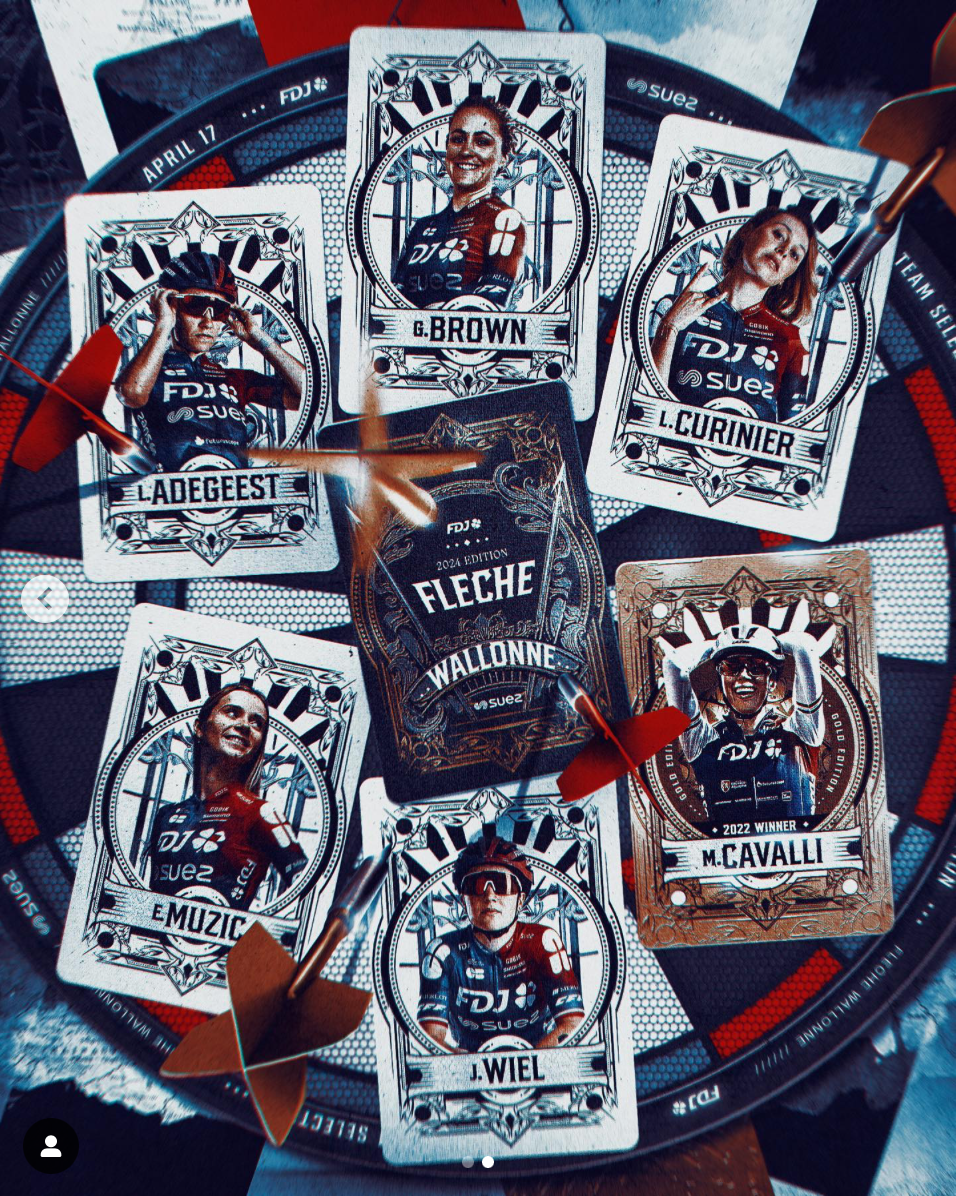
These works of art are made by LJ Stration, a French graphic designer, who has done work for sports teams and clothing brands alike. You can find more of his work on his Instagram and Twitter pages.
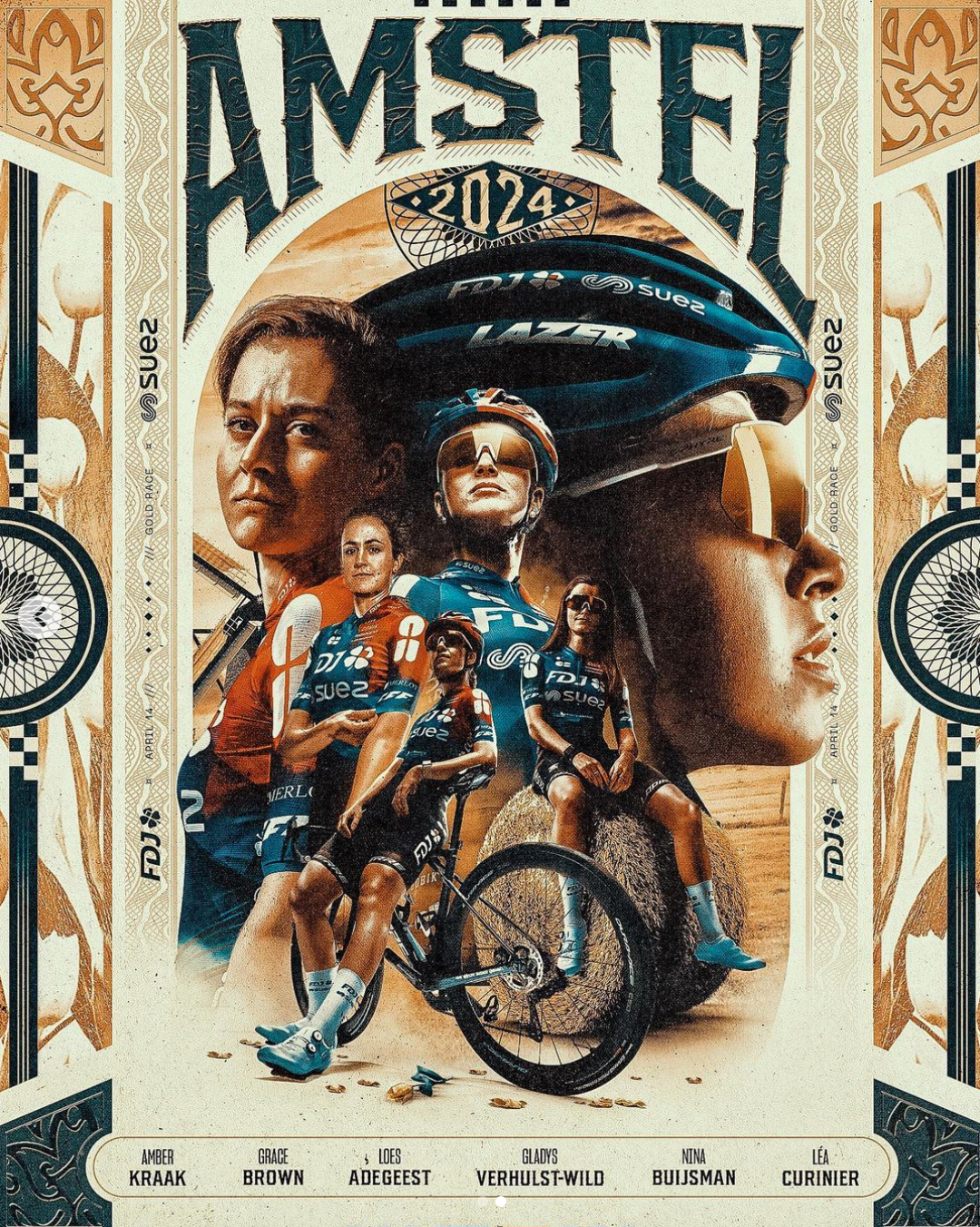
The mastermind behind the new look is Marius Brosse, Marketing and Communications Director at FDJ-Suez. Brosse came to cycling from basketball and has brought some things over from his old workplace.
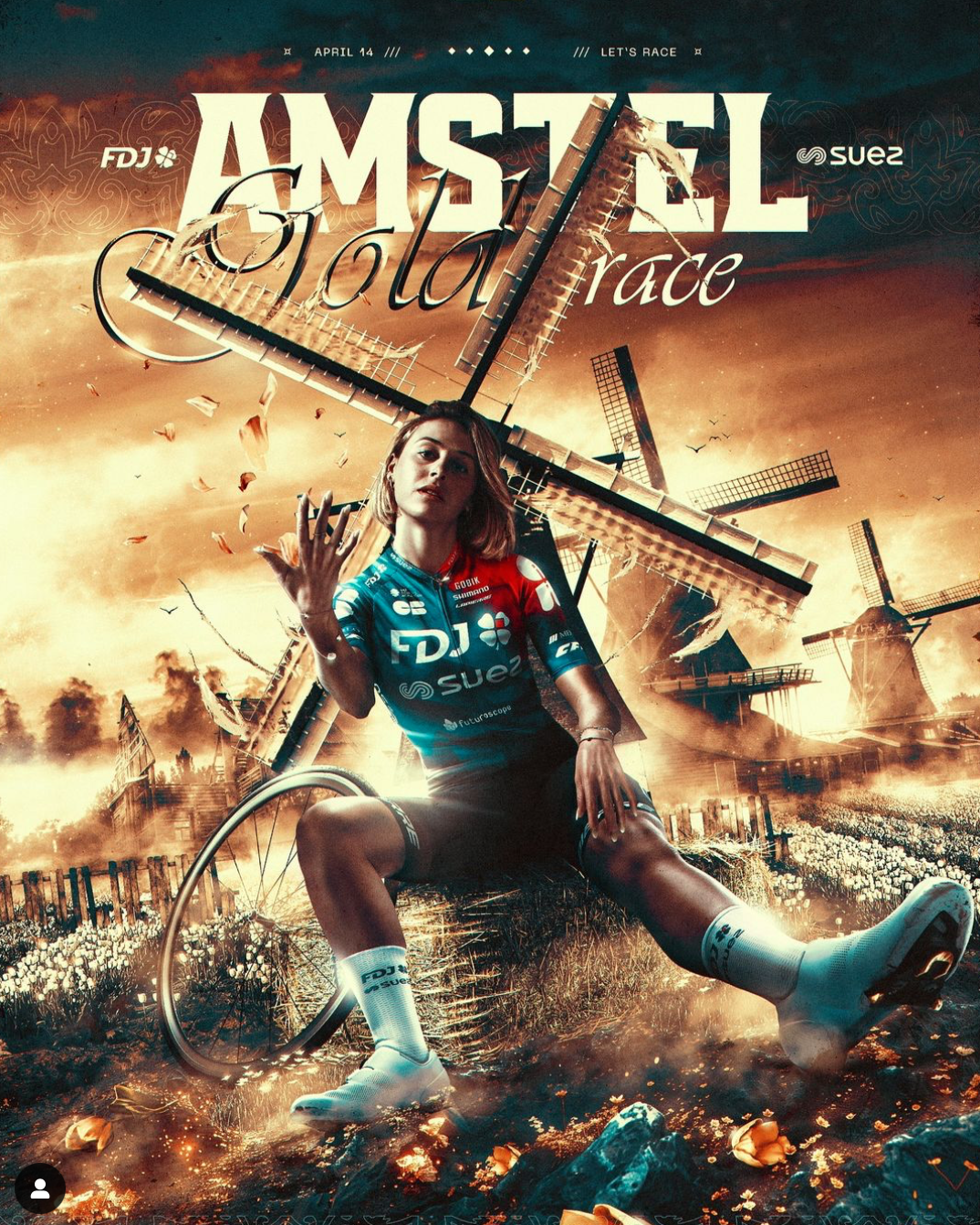
A picture worth a couple of words
While we're talking about FDJ-Suez, this is one of my favorite photos from the 2022 edition of La Flèche Wallonne, when Cavalli took to the podium cheered on by her teammates, one of whom was Evita Muzic, the French national champion.
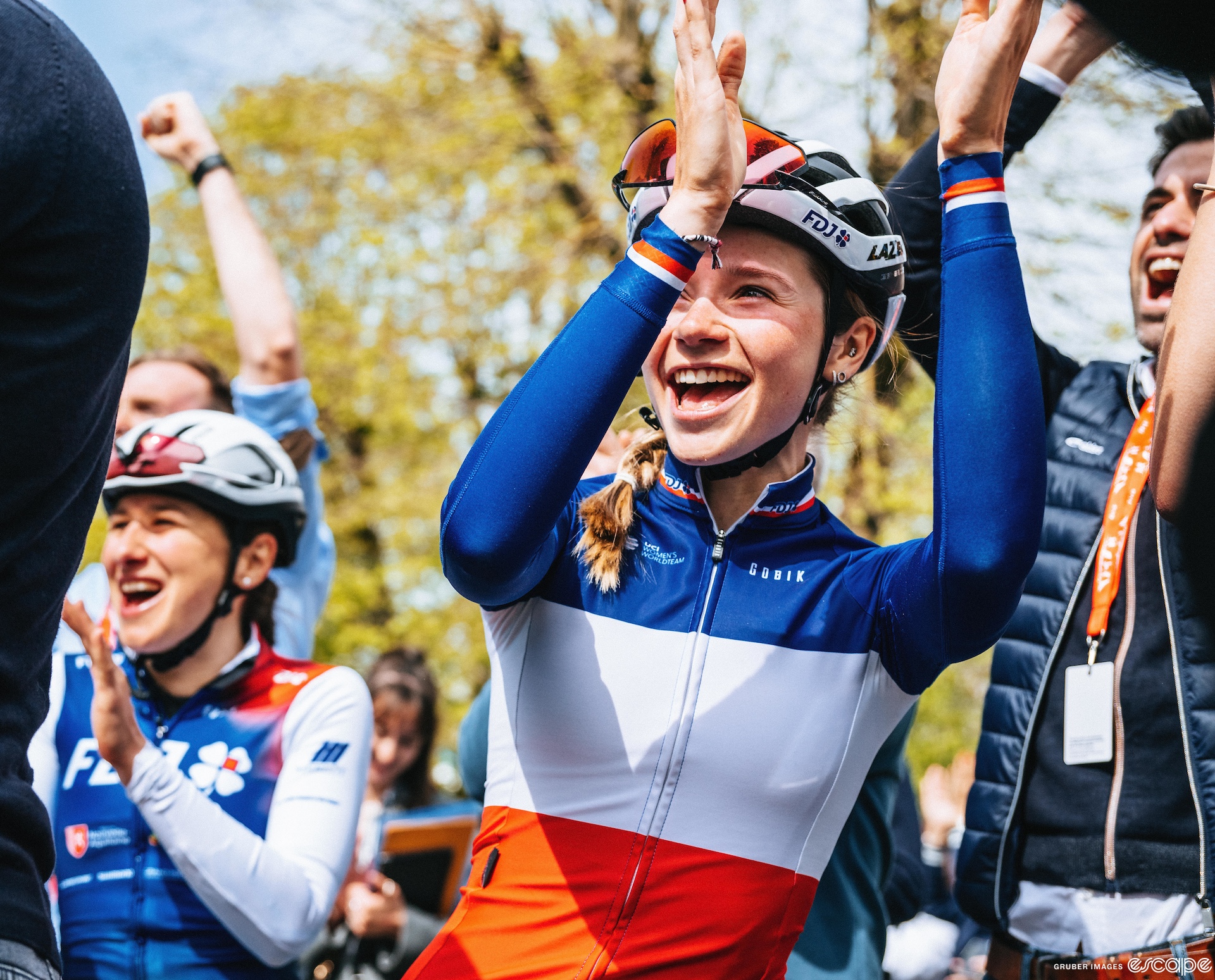
The win was one of the French team's first on the world stage. They started as a development team for primarily French riders in 2006 but began the shift into a more international team in 2017 with the signing of Australia's Shara Marche. That year Marche finished fifth at La Course in the Tour de France and by the following year, they picked up Lauren Kitchen and a few Dutch riders.
By 2019 the team was still mostly French, with a German, Norweigan, Swede, and two Aussies, but they really put themselves on the map with the signing of Cecilie Uttrup Ludwig in 2020.
That year Uttrup finished second at Flèche and Evita Muzic won the last stage of the Giro Donne.
Over the next two years, they continued to grow the team's results, but 2022 was by far the best year for the team to that point. Cavalli's wins at the Amstel Gold Race and Flèche Wallonne turned into stage wins for Clara Coponni and Grace Brown at the Women's Tour [of Britain] and a Tour de France Femmes stage win and Tour of Scandinavia overall for Uttrup. Brown wrapped up their season with a stage win at the Vuelta España Femenina.
This moment, when Muzic and others are cheering for Cavalli, was a big one for a French team on the rise. It set the scene for what we would expect from the team in the future and what the team still hopes to become.
Taylor Swift trivia
It's the final countdown! THREE MORE DAYS UNTIL THE TORTURED POETS DEPARTMENT IS OUT!
Until next time!
Two bits of news to close out the newsletter.
I'll start with the bad news. SD Worx-Protime announced on Tuesday that Anna Shackley is retiring from elite sport with immediate effect due to cardiac arrhythmia.
Terrible news for fans of the Scotswoman. A long time ago, in another life, Shackley joined Fisher-Black in recording audio diaries for another podcast I used to host, the two were amazing. It is sad to see her leaving the peloton, but the most important thing is her health
Let's end on a positive! The newly re-named (to what it should have been in the first place) Tour of Britain unveiled the route for this year's event. Months ago it looked like the race would be no more, but now with the four stages out there in the world, hopes are high.
The race is scheduled to take place from June 6-9, starting in Welshpool with a stage in Wrexham (IYKYK). More route analysis to come closer to the event.
And that's it! Thank you so much for reading this week's Wheel Talk Newsletter! If you have any topics you'd like me to dive into, please reach out on the Escape Discord or on social media @abimickey.
Did we do a good job with this story?



